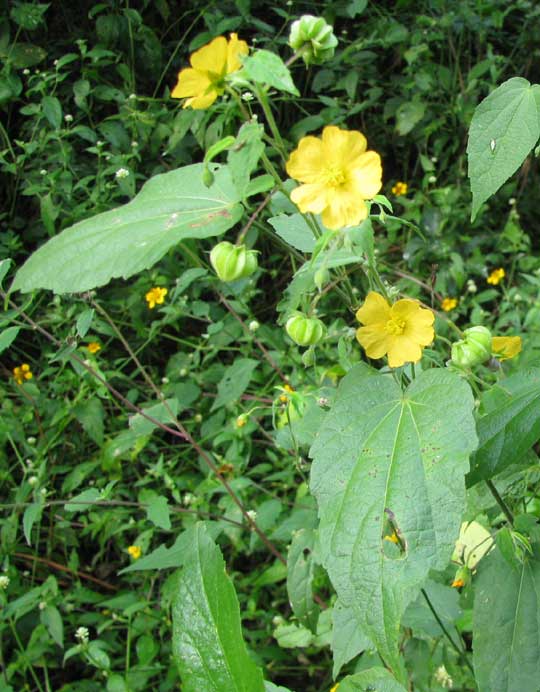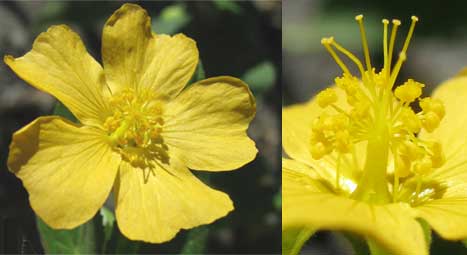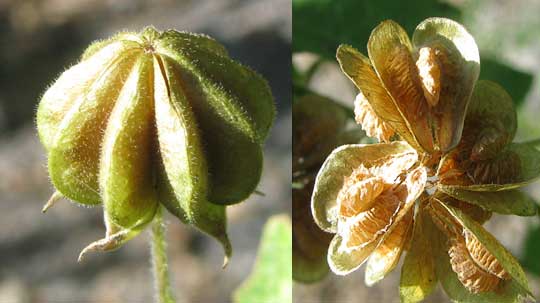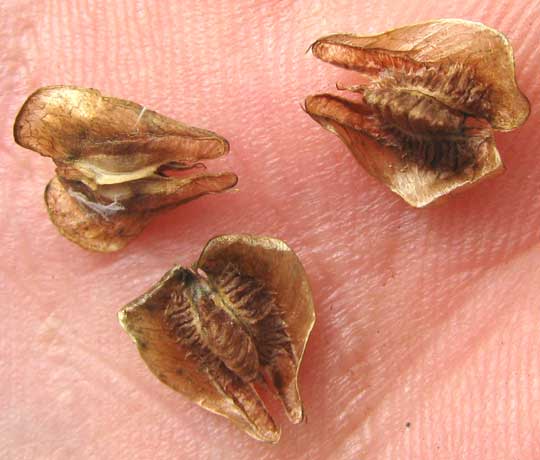Excerpts from Jim Conrad's
Naturalist Newsletter
from the November 14, 2010 Newsletter issued from Hacienda Chichen Resort beside Chichén Itzá Ruins, central Yucatán, MÉXICO; limestone bedrock, elevation ~39m (~128ft), ~N20.676°, ~W88.569°
GAYA CALYPTRATA

Above you see a yellow-flowered weed with green, ribbed, inflated, Chinese-lantern-like fruits next to my hut door two weeks ago. I've delayed introducing the little plant because it's taken me two weeks of hard internetting to identify it. At first glance it looks like any number of weedy, yellow-flowered herbs blossoming these days, but a closer look reveals lots of curious features, especially those Chinese-lantern fruits.
Obviously it's a member of the Hibiscus Family, the Malvaceae, because of how the many stamens join at the bases of their filaments into a cylinder around the ovary's style. Two views of a flower are shown -- the view on the left showing the tree-like collection of stamens on their "staminal column" overtopped by ±7 filament divisions topped by blunt stigmas -- below:

A 2/3-inch-wide (17 mm) fruit pod -- the view at the left showing a head with its nine hairy segments intact while the view at the right shows the segments open, exposing the seeds -- is shown below:

You can see what the segments look like when they open and fall from the head below:

Those open segments clarify why the plant goes to all the trouble of making those Chinese-lantern heads: Each segment ends up equipped with two wings capable of catching the wind and carrying the seeds downwind.
For two weeks I tried identifying this plant, and in the process was mightily impressed with regard to the size and diversity of the Hibiscus Family, which in its traditional sense embraces over 200 genera and about 2300 species. Recent genetic studies have caused most experts to lump several families formerly regarded as distinct into the Hibiscus Family, including the Basswood, Sterculia and the Bombax Families, which makes the family even much larger.
UPDATE: In the end I couldn't be sure what it was. Years later I uploaded the picture to iNaturalist, where user "danielmcnair" recognized the plant as GAYA CALYPTRATA, occurring spottily in southern Mexico, Guatemala and Honduras, then again in Peru, Bolivia and Ecuador.